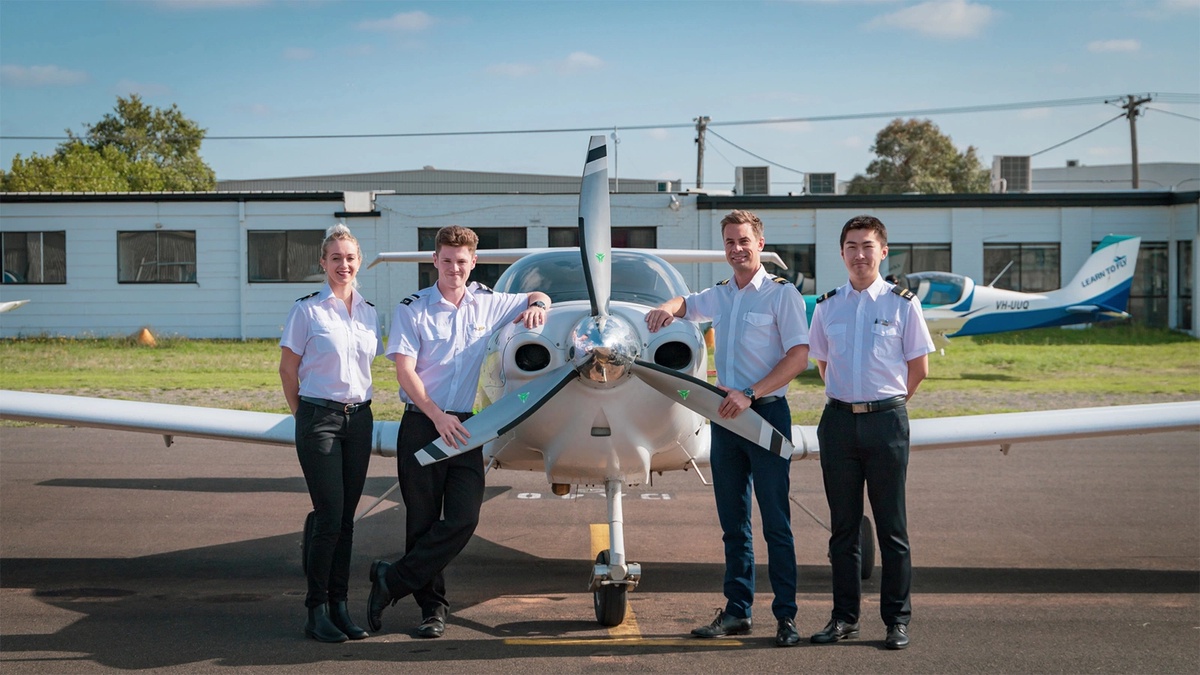Flight training in Australia is a dream for many individuals fascinated by aviation and the thrill of flying. Whether you aspire to transport passengers, fly cargo planes, or serve in the military, embarking on a career as a pilot in Australia requires dedication, training, and a passion for flight. This article will tell you all about it.
What is a Pilot?
Pilots undergo flight training programs to get a licence to operate and navigate aircraft, such as aeroplanes, helicopters, and other flying machines. They play a crucial role in the aviation industry, as they are responsible for safely flying passengers and cargo or conducting various flight operations.
There are different types of pilots, each with specific responsibilities and qualifications:
- Commercial Airline Pilots
These pilots work for airlines and are responsible for flying commercial aeroplanes and transporting passengers and cargo from one destination to another. They undergo rigorous training and hold an Airline Transport Pilot Licence (ATPL) to operate large transport category aircraft.
- Private Pilots
Private pilots have to gain a PPL Licence in Australia. They can fly for personal reasons or non-commercial flights. They often own or rent smaller aircraft for recreational purposes.
- Military Pilots
Military pilots are part of the armed forces and are trained to fly military aircraft for various missions, including combat, reconnaissance, and transport.
- Helicopter Pilots
These pilots specialise in flying helicopters, which have different flight characteristics and capabilities than fixed-wing aircraft.
- Cargo Pilots
Cargo pilots work for cargo airlines and are responsible for transporting goods and freight to various destinations.
- Corporate Pilots
Companies or private individuals employ corporate pilots to operate aircraft for business purposes, such as executive travel or company logistics.
Responsibilities of a Pilot
The tasks and duties of a pilot can vary depending on their specific role and the type of aircraft they operate. However, some common tasks and duties that pilots typically perform include:
- Pre-flight Preparation
Before each flight, pilots must review weather conditions, flight plans, and aircraft documentation. They conduct pre-flight checks, ensuring that the aircraft is in proper working condition and that all required equipment is on board.
- Flight Operations
During the flight, pilots are responsible for controlling the aircraft, navigating, and adhering to the flight plan. They communicate with air traffic control (ATC) to receive instructions and updates on weather conditions and airspace restrictions.
- Safety Procedures
Ensuring the safety of passengers, crew, and aircraft is paramount. Many airline cadet programs teach pilots to be prepared to handle emergencies and follow standard operating procedures to address various scenarios, such as engine failures, adverse weather conditions, or medical incidents on board.
- Communication
Effective communication is crucial for pilots. They must communicate with air traffic control, other aircraft in the vicinity, and their crew members to ensure a smooth and safe flight.
- Decision Making
Pilots need to make critical decisions during the flight, including route changes, altitude adjustments, and diversion to alternate airports in case of unexpected events or emergencies.
- Monitoring Instruments
Many airline cadet programs will teach pilots to constantly monitor various instruments and gauges that provide information about the aircraft's speed, altitude, fuel levels, and engine performance.
- Autopilot Management
Pilots may engage the autopilot system for long-haul flights, but they remain vigilant and ready to take manual control if necessary.
- Post-flight Duties
After landing, pilots complete post-flight checks and submit flight reports. They may also participate in post-flight briefings with the airline or company to discuss any noteworthy occurrences during the flight.
- Continuous Training
Pilots must undergo regular training and simulator sessions to maintain their licences and stay up-to-date with the latest regulations and advancements in aviation.
- Crew Coordination
In commercial flights, pilots work as part of a team with co-pilots and cabin crew. Effective crew coordination and communication are essential for smooth operations and passenger safety.
What Are The Requirements For Pilots In Australia?
To pursue a career as a pilot in Australia, aspiring individuals must obtain a pilot licence through theoretical and practical training. While specific aviation licence requirements depend on the type of licence sought, the general eligibility criteria include the following:
- Completion of high school education with essential subjects like mathematics and English, which are crucial for pilot roles.
- Selection of the desired licence type and enrollment in a flight school that provides training for that licence. Commonly sought-after licences include the Private Pilot Licence (PPL) and the Commercial Pilot Licence (CPL).
- Holding a current medical certificate based on the type of licence pursued.
- Completion of the necessary flight training based on the chosen licence type. PPL training typically involves around 55 to 60 hours of flight training over 2 to 12 months, while CPL requires 150 or more flight training hours over 12 months.
- Successful completion of examinations and flight tests to obtain the licence, granting eligibility to fly solo in Australia.
With commitment and perseverance, the skies become a canvas for an extraordinary and rewarding profession. So, if you dream of flying high, take that leap of faith and let your aspirations take flight. Happy flying!


No comments yet